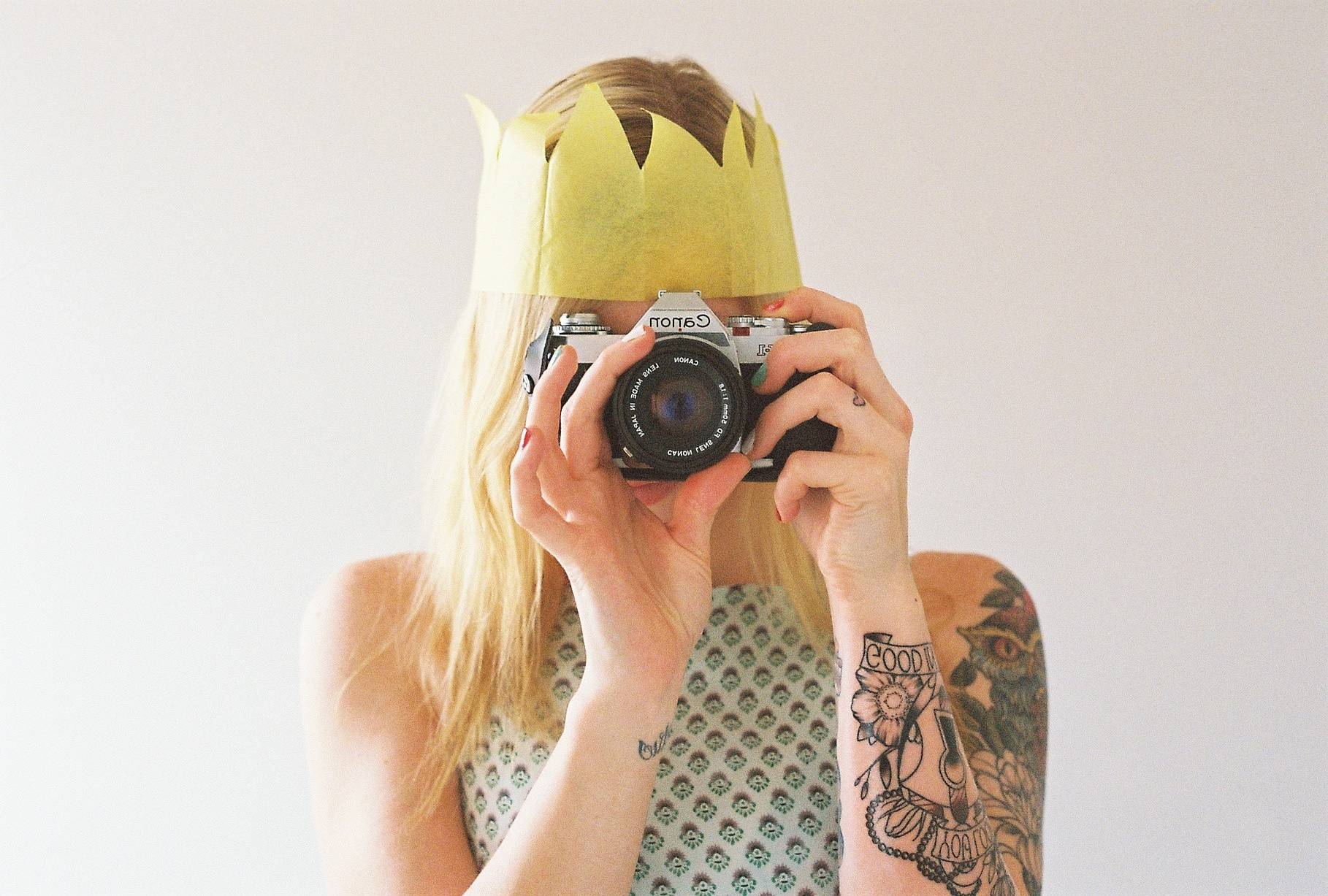Cameras in Depth: SLR Viewfinders
6 22 Share TweetThis article is mainly of a technical nature, but with some considerations related to my own feelings. It’s a comparison of the viewfinders of some of my SLR cameras. After the previous article dedicated to camera with plain glass viewfinders, now it’s time to spend some attention to SLR viewfinders and focusing screens. Each system has its advantages and its limitations; this article is a suggestion to help you to choose the viewfinder more suited for your needs.

The first viewfinder analysed in this article is that of my Pentax ME Super. Very bright, it has a coverage of 92% and a magnification of 0.95 (these specifications are always calculated for a standard lens with a focal length 50mm focusing at infinity). This means that the image in the viewfinder has almost the same size of the real image that you can see with the other eye, that you can use to pre-visualize the scene (for example to recognize and prevent an intrusion in the frame, or to better understand what is going to happen). In fact framing with both eyes open is very important in street photography!
The exposure meter with LEDs, located on the left side, is perfect for camera designed to be used mainly in aperture priority; the green LEDs indicate safe times, the yellow LEDs those equal or slower than 1/30s (camera shake risk), the red ones indicated complete underexposure or overexposure. Just give it a quick look at the exposure meter before framing, then you can forget it (unless you are shooting in manual mode), concentrating to framing only. The non-interchangeable focus screen has in its center the classic micro prism and split-image stigmometer. This is a standard choice for many SLRs, with two drawbacks: with dim aperture (as using some telephoto lenses) the image will become black in the center. Second: the use of these focusing aids lead often, and almost always unconsciously, to put the main subject in the center of the photo. Finally, notice that, in the western world we are used to read from left to right, so with this camera there will be spontaneous to read the meter before framing. This solution is one of the best for street photography, even I prefer (for habit) the opposite sequence.

Here are two of my images taken with this camera and dedicated to fascinating body parts, always pleasant to photograph for its richness of gestures: hands.
Even this is a general purpose viewfinder, this is simply perfect for indoor photos (portraits and details): focusing is simple even in low light conditions. Take a look at these close-up of hair and faces taken by some skillful lomographers! Congratulations to all!
Let us now examine a quite similar viewfinder, that of my beloved Canon AV-1, a full shutter priority mode camera. It has the same focus system (not interchangeable) of the Pentax ME Super. About focusing, the same considerations apply here. However, this camera has a slightly lower magnification (0,87), and this makes the binocular vision slightly more difficult and less spontaneous, also hampered by larger size of the camera (if you are framing with the right eye, the left one visual is in part obstructed by the camera body). The exposure meter shows, like in the previous camera, the shutter times, thanks to a moving needle placed on the right side. It is easier to read than LEDs in a bright day, and a bit more difficult in low light conditions. In this case it is more spontaneous framing and then checking the exposure meter. It is the opposite sequence respect to the Pentax and it is also my preference, because I like to concentrate on the composition and then quickly check the exposure meter. I do not care about carefully reading the shutter speed: if the needle is horizontal I’m sure to have a time of at least 1/30 second or faster.

With this camera I always have a lot of fun taking pictures without thinking too much about aperture and time, thanks to its automatic and reliable aperture priority mode!
I also see from your photos that this is a jaunty camera, easy and fun to use to take with you everywhere in your adventures and in your spare time!
The Pentax MX, the next camera, deserves a different speech. Classic among the classic, completely mechanical, it is equipped with a viewfinder with a 95% coverage with an almost unitary magnification (0.97), which means that what that we see in the viewfinder is almost identical in size to what we can see with the other eye! In this case the binocular vision is easy, thanks also to the compactness of the camera, one of the smaller SLR (all the Pentax M cameras are very small SLR). This is particularly useful for action shots, facilitated among other things by having all the information in the viewfinder (you don’t need to move the camera away from the face to check the shutter speed dial and the aperture). In fact on the top of the viewfinder, there is an optical periscope which shows you the aperture, reading it directly from the lens scale; on the right side a semicircular crown indicates the shutter time time while five LEDs are used for the exposure meter (green light for proper exposure, two orange LEDs to indicate an over or underexposure of 1/2 stop, two red lights for one or more stop error).
The only drawback is that these LEDs are not as bright as is more recent cameras, and sometimes they are difficult to see in full sunlight (although in this case the exposure meter is seldom checked, for example in daytime I use often the rule of 16). Two words about the focusing screen: the standard is similar to that of the ME Super and the AV-1 (stigmometer and microprisms), for which the same considerations apply. I recommend instead to change it with the SA-1 model (no stigmometer), or even the SA-3 model (the one shown in the figure at the beginning of article), good for bright lenses (F1.2 – 1.7) thanks to the different angle of the microprisms, it is very pleasant to use this model with my SMC Pentax 50/1,4 lens. The small circle with microprism is quite small, so unobtrusive, and focusing is possible over all the screen surface (using the center part only for fine adjustments, for example when we are working at full aperture). In this way you will not be unknowingly dragged to leave the subject in the center after you have focused it!

In these two photos I used this camera, mounting a 28 mm wide-angle lens on it:
I turn now to your photos: this machine allows you to study the composition very carefully; you can even control the depth of field by simply pushing the self-timer lever toward the lens.
The Olympus OM-1 (and its latest version, the OM-1n, virtually indistinguishable from the first one if not for internal improvements), was, in the ‘70s, the direct competitor of the Pentax MX. Also it is equipped with a very bright viewfinder, which covers 97% of the field with a magnification of 0.92, and this also lends itself well designed for a binocular vision. As for the MX, it allows to control the depth of field acting on a small button placed on the Olympus Zuiko lenses, and as the previous camera it allows to change the focus screen. The standard one (model 1-13) is the usual general purpose with micro prism and horizontal stigmometer, as in previous cameras; I have also the 1-14 model that differs from the previous one because the image splitting is diagonal (this is more versatile if for example you do not have vertical references to focusing), the 1-1 model similar to those I have mounted on the MX, and the 1-4 model, the one I chose, that you can see in the introductory drawing. It consists in a plain matte surface with a big and very bright central circle which facilitates the focusing action; there aren’t microprisms. Great for general use, it is also suitable for long focal lengths. Being able to focus uniformly throughout the whole screen, it allows great freedom of composition.
Keep in mind that a beginner tends to lose precious moments trying to have a precise focusing, forgetting that, when we are working with normal and wide-angle lens with a fairly small aperture (F5.6 or narrower, as often happens for photos taken outdoors in daytime) a slight focusing imprecision is completely irrelevant to the result (the depth of field is always guarantee of success). Certainly this screen is not recommend for macro photos: in this case few tenths of a millimeter makes a great difference between a good photo and a totally blurred one. The exposure, very simple and unobtrusive, is a small needle on the left of the viewfinder. A quick check, then you can compose. I really like working with a so clean and minimalist viewfinder, free of distractions.

Here are two photos of a talented artist street, The Pianist Outside Place, a nice musician who travels throughout Italy with his piano. You can see that by using this focus screen it is easier to compose and focus even taking the main subject away from the center of frame.
Also noteworthy are these colorful community photos taken with this camera!
The Canon AE-1 Program is one of the most popular SLR camera, thanks to its great versatility: you can shoot in manual, time priority and also in fully automatic mode.

The viewfinder is very bright with a 94% coverage but with a lower magnification (0.83), smaller than in the Pentax and in the Canon AV-1 too. This makes binocular vision not so easy, however this camera possesses all the qualities for an accurate compositions as for photos “on the fly”. The standard screen is interchangeable; however on this camera I haven’t made a replacement, since it is not so comfortable as the others cameras to work with both eyes open. On the right side there is a LED light meter that shows the aperture, I honestly do not pay great attention on it, because I always work with this camera in shutter-time priority mode. It is a good general purpose viewfinder suitable both for photos taken outdoors and for studio work.
Taking pictures with this camera is always easy and fun. Composing in a so bright viewfinder is always a pleasure: you can shoot in confidence without fear of wrong focusing, thanks to valid central aids of the standard screen!
The very inexpensive and humble Praktica MTL 50 is one of my favorite camera, mainly for its ergonomics (which I will describe in a future article) for the viewfinder. This one is very simple and without frills. Despite being less bright than the others, the focus screen (not interchangeable) presents some interesting details: the outside of the glass is, as for the other standard slides, a Fresnel lens, while the large central circle is composed of three different parts: starting from the outside we find a plain glass ring, a microprism ring and a double stigmometer split-image, really effective for those who have a little weakened view due to a slightly weakened eyesight. Of course there are all the limitations of the standard viewfinder, but this one has an excellent coverage (0.95) with a similar enlargement to that of the AV-1 (0.86); not too bad for an entry level camera!
However, the lower brightness of the viewfinder doesn’t facilitate the use with both eyes open. On the right side you find a very simple exèpsire meter (I appreciate it very much for this reason: there are ony two red LEDs: when both are illuminated with the same intensity the exposure is the correct one). On the previous model, the MTL 5B, you find a needle instead of the LEDs; honestly prefer the latter because with this camera you have to measure the light in stop down mode (closing the lens blades with a small button). Outdoors, with very narrow apertures, it can be difficult to see the needle (although the meter is important mainly in low-light conditions: when the sun shines you can forget it!)

The few indications present allow me to avoid distractions easily searching the good moments to shot, like in these two photos: the guy who runs with both feet off the ground, and the diver touching the water with his fingers are two typical examples of what can be achieved by this camera!
And now, here are some of your impressive photos as fine examples!
I’ll close this article with a little tip: if you have a camera with interchangeable focus screen, don’t let the standard one mounted (you can find it in many entry level cameras) but search for a screen that personalizes the camera, and one that best suits your needs. For this reason, on two cameras with interchangeable screen, I mounted two different models, and different from the general purpose model with microprism and split image.
Cameras-in-Depth is a series dedicated to a comparison between film cameras, illustrating some hidden details to help you to choose the right camera for you! The previous article was about Plain Glass Viewfinders.
written by sirio174 on 2016-05-18 #gear #review #slr #viewfinder #slr-cameras #focusing-screen #camera-comparison #cameras-in-depth
translated by sirio174




















































6 Comments